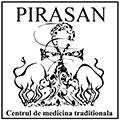Osteoporosis is a chronic disease manifested by the demineralization of the skeletal system. The inner structure of the bone is affected first of all. The bones become porous and fragile. The risk of fractures in small effort is increased and this may occur even during normal movements in advanced stages.
According to the degree of bone density, three stages of the disease were identified, namely: osteopenia, osteoporosis and manifest osteoporosis (characterized by the presence of a fracture).
Although both sexes may suffer from osteoporosis, it affects mainly the women of third age, being one of the effects of menopause’s onset. The hormonal changes specific for this period cause disorders in the assimilation of minerals and, implicitly, the decrease of the skeletal system’s strength.
By the age of 25 years old, the density of the skeletal system increases. Then, after 25 years old, it begins to decrease by approximately 0.3 – 0.5% a year, as a result of the aging process. The rate may be accelerated under certain circumstances:
- Sex: women have a bone structure less dense than men.
- Race: Caucasians have a bone structure less dense than black people
- Onset of menopause before 45 years
- Hormonal disorders and the decrease of estrogen level in the body (where women are concerned, as a result of menopause onset/surgical removal of both ovaries or of the uterus)
- Amenorrhea – the absence of menstruation causes abnormal estrogen values
- A fragile bone structure
- Alcohol abuse
- Smoking
- A sedentary life and lack of physical exercise
- A diet with a low share of calcium
- Chemotherapy (because of the harmful effect it has upon the ovaries, it may cause early menopause)
- Long term corticoid treatment
- Bed immobilization as effect of certain diseases and complete lack of movement (e.g.: paralysis)
- Diseases of the thyroid gland: hyperthyroidism, hyperparathyroidism etc.
- Gastrointestinal diseases: hepatic cirrhosis, malabsorption syndrome etc.
- Diseases of the bone marrow: leukemia, hemolytic anemia, disseminated carcinoma, lymphoma etc.
As the onset of osteoporosis is not accompanied by disturbing symptoms for the patient, after the age of 35 years old it is recommended to take at least two specialty analyses a year. The status of the bone structure density may be ascertained by osteodensitometry or by computerized thermography of contact.
In its first years of development, the disease does not show any symptom that could alarm the patient. In the most cases the patient does not feel any discomfort until the occurrence of the first fracture.
In severe cases, the skeletal system loses massive amounts of mineral substances. Bone pains occur, both during day and night, pains that will not give in under treatment by painkillers.
The fractures occur especially in hands, pelvis, hip, vertebral column, ribs and humerus. The recovery is difficult, taking into account the deficit of mineral assimilation.
In the spine area the fractures occur when the vertebrae start to tamp, usually as a result of the slightest efforts (sneezing, bending, and lifting of small weights). The pain appears in the affected area right away and it decreases within a few weeks. In time, the sick person loses stature as the spine changes shape. This changes may be accompanied by acute back pains. Along with the vertebral tamping, the degenerative disc disease also appears (sclerosis of the intervertebral discs).
During my medical career and by treating this disease, I have noticed that stress, hormonal disorders, obesity as well as a imbalanced life style and diet also add to the above mentioned causes.
Stress breaks the body’s energy balance and it affects the activity of the endocrine system in time. Obesity is caused by very severe endocrine disorders. In time, a chaotic life style and an unhealthy diet lead to the onset of metabolic and endocrine disorders.
In all these cases the assimilation of minerals is greatly diminished, which encourages the onset of osteoporosis.
Curing osteoporosis by acupuncture and apiphytotherapy implies remineralization of the bone structure in the first place by eliminating stress, obesity and balancing the endocrine system. At the same time, the treatment deals with the detoxification of the digestive system, in order to increase the amount of absorbed minerals. The herb extract are enriched with mineral substances and with natural vitamins to supply the body with the necessary resources for the healing process.
In addition to the improvement of the intestines’ absorption capacity, the calcium receptors in the body must be able to receive the necessary amounts of calcium. In most cases of osteoporosis, these receptors are stuck with other substances or toxins, which make it impossible for the minerals to be assimilated in the body, even if they are present.
At the same time, the calcium transporters’ activity will be normalized, too, in order to improve the rate of minerals and vitamins absorption and assimilation.
Balancing the metabolism implies the resorption of calcium from the inappropriate areas where it has been deposited and the redistribution of the new shares to the areas of the body that need calcium.
The pains and discomfort specific to this disease are greatly diminished during the whole treatment by the action of acupuncture and herbs.

